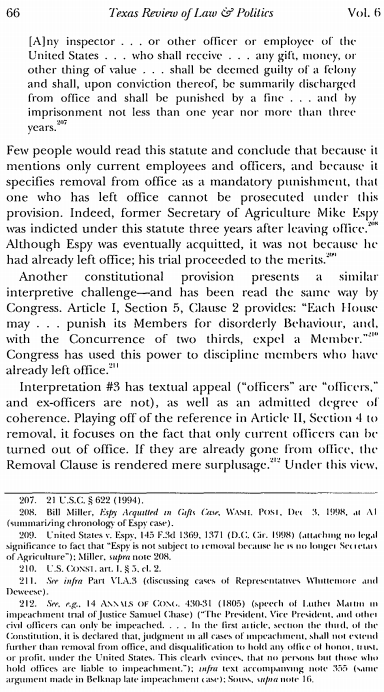
Trump's brief cites my 2001 article on late impeachment a lot: int.nyt.com/data/documentt…
The article favored late impeachability, but it set out all the evidence I found on both sides--lots for them to use.
But in several places, they misrepresent what I wrote quite badly.
1/4
The article favored late impeachability, but it set out all the evidence I found on both sides--lots for them to use.
But in several places, they misrepresent what I wrote quite badly.
1/4
One odd thing they do is cite me citing other sources instead of just citing those sources (e.g., p.17 & n.47). Another more problematic thing: they suggest that I was endorsing an argument when what I actually did was note that argument--and reject it (e.g., p.21 n.57).
2/4
2/4
There are multiple examples of such flat-out misrepresentations. The worst is page 30. They write, "When a President is no longer in office, the objective of an impeachment ceases."79
N.79 starts: "Kalt at 66."
What I actually wrote on 66 (discussion continuing onto 67):
3/4

N.79 starts: "Kalt at 66."
What I actually wrote on 66 (discussion continuing onto 67):
3/4


Again, my article presented all of the evidence I found on both sides, so there was lots for them to use fairly. They didn't have to be disingenuous and misleading like this.
The House managers' brief cited my article a lot too and, to their credit, did so honestly.
4/4
The House managers' brief cited my article a lot too and, to their credit, did so honestly.
4/4
• • •
Missing some Tweet in this thread? You can try to
force a refresh


